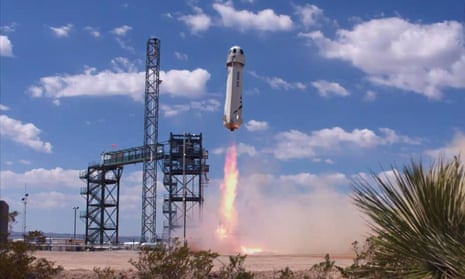Blue Origin, the aerospace company owned by Jeff Bezos, Amazon’s chief executive, has completed the eighth test flight of its New Shepard reusable rocket and unmanned crew capsule, blasting off from West Texas on 29 April.
After a 10-minute flight, during which the hydrogen-fuelled vehicle reached a velocity of almost 2,200 miles an hour and altitude of 66 miles, the rocket made a controlled touch down on Earth and the ejected crew capsule parachuted back down too.
No people were on the flight but the capsule carried experiments arranged by DLR (the German space agency) and Nasa. The flight also carried a test package to demonstrate that wifi communications could be achieved during the suborbital flights, an essential for the space tourism for which the rocket is designed.
On board too was a dummy astronaut, nicknamed Mannequin Skywalker, which was fitted with sensors to show what stresses the flight would impose on the human body.
With the success of this mission, the company plan to arrange flights for the first people by the end of the year – then, in 2019, open the service up to paying space tourists.

Comments (…)
Sign in or create your Guardian account to join the discussion